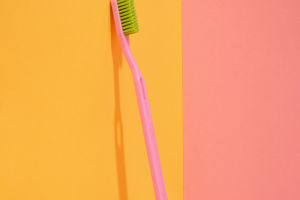Flower arranging is a unique art form that combines color, shape, and texture to enhance the beauty of everyday life.
For those who are just starting their journey into flower arranging, it can seem daunting with all its techniques and rules.
However, beginning with simple methods can lead to stunning results.
First and foremost, choosing a single type of flower is fundamental to creating an arrangement. Using one kind of flower ensures overall harmony and consistency, minimizing mistakes in pairing different blooms.
This approach is particularly beneficial for beginners, as it avoids the visual chaos that can arise from mismatched flower combinations. For instance, selecting roses or daisies and tightly packing them into a vase can create a lush and full appearance.
This compact arrangement not only brings vitality to the display but also conveys a sense of unity as if each flower is striving to bloom for the same purpose.
Next, arranging flowers in the same color family can add a striking depth to the composition. Using blooms in similar shades, such as light and dark pink roses, can create a beautiful gradient effect that enhances the artistic quality of the arrangement.
This color coordination prevents clashes, offering a natural flow that envelops the viewer in a dreamlike spectrum. The use of analogous colors not only adds depth but also allows each flower's unique characteristics to shine, enhancing the overall aesthetic appeal.
This kind of arrangement not only builds confidence in novice florists but also sparks innovative thinking about color use, further refining their skills.
For beginners, opting for short vases is a smart choice. Using lower containers simplifies the requirements for stem length, relieving newcomers from the worry about proportions.
By trimming the stems so they just peek above the rim, the blooms can showcase their beauty without complication. This approach not only reduces the difficulty of arranging flowers but also maintains a natural, casual feel, making the composition more lively.
Flowers in shorter vases often attract attention with their compact and robust presence, instantly conveying a sense of life and energy. This minimalist approach paradoxically highlights the delicacy of the blooms, showcasing the charm inherent in the art of flower arranging.
Moreover, combining various vases can greatly enhance the overall effect of an arrangement. By grouping several small, narrow-necked vases, you can create a unique display. Each vase can hold one or two stems, arranged in a staggered fashion to generate rich visual layers.
Even when using the same type of flower or incorporating simple fillers like eucalyptus leaves, the result can be unexpectedly beautiful.
This method not only masks the inexperience of beginners but also reveals a distinctive artistic style, enlivening the entire space with energy and vitality. Thoughtfully utilizing different vase shapes and heights can create a sense of dimensionality and complexity, deepening interest in the flower arrangement.
Throughout the process of learning to arrange flowers, it is essential to maintain an open mindset and be willing to experiment with various styles and combinations. Flower arranging is not just a skill; it is a joyful pursuit.
Engaging in this art not only enhances your manual dexterity but also enriches your living environment with beauty. Each bouquet carries emotional significance and can evoke different feelings at various moments.
Whether crafting an arrangement for oneself or others, the joy lies in the creation and sharing of beauty. This creative process fosters imagination and will deepen your appreciation for this art form, allowing you to discover more joy and fulfillment in life.


